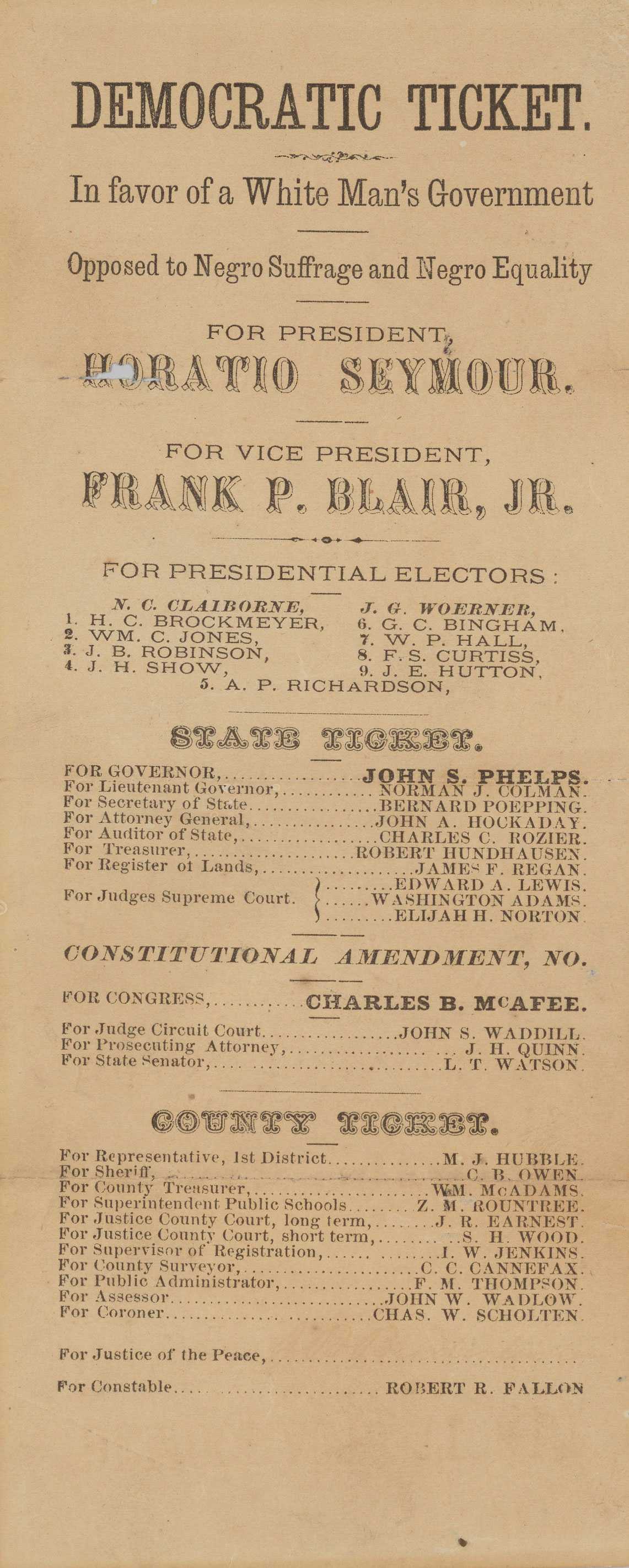Visions of Freedom: Democracy
During Reconstruction, African Americans gained citizenship rights. The United States government recognized these rights by creating three amendments to the Constitution and passing the first federal civil rights acts. These laws promised equal protection, equal access to public accommodations, and the right to vote regardless of race.
But after 1873, the federal government retreated from enforcing civil rights laws. White supremacists used voter suppression, violence, and terror to regain political power in southern states and to strip away the rights gained by African Americans. By the end of the century, in place of democracy, African Americans faced a system of racial discrimination that confined them to second-class citizenship.
White Opposition to Racial Equality
Red Shirt
Red Shirts gathered outside the polls on Election Day in Laurinburg, North Carolina, 1898
When southern states seceded from the United States to form the Confederate States of America, they rejected the nation’s founding premise that “all men are created equal.” In his “Cornerstone Speech,” Alexander H. Stephens, the vice president of the Confederacy, stated: “Our new government is founded upon exactly the opposite idea; its foundations are laid, its corner-stone rests, upon the great truth that the negro is not equal to the white man; that slavery—subordination to the superior race—is his natural and normal condition.”
After the Confederacy lost the Civil War and slavery was abolished, white southern Democrats continued to uphold white supremacy as the basis for reconstructing southern society. They used terror and racist propaganda to defeat the Republicans, who supported African American civil rights, and regained political control of the South.
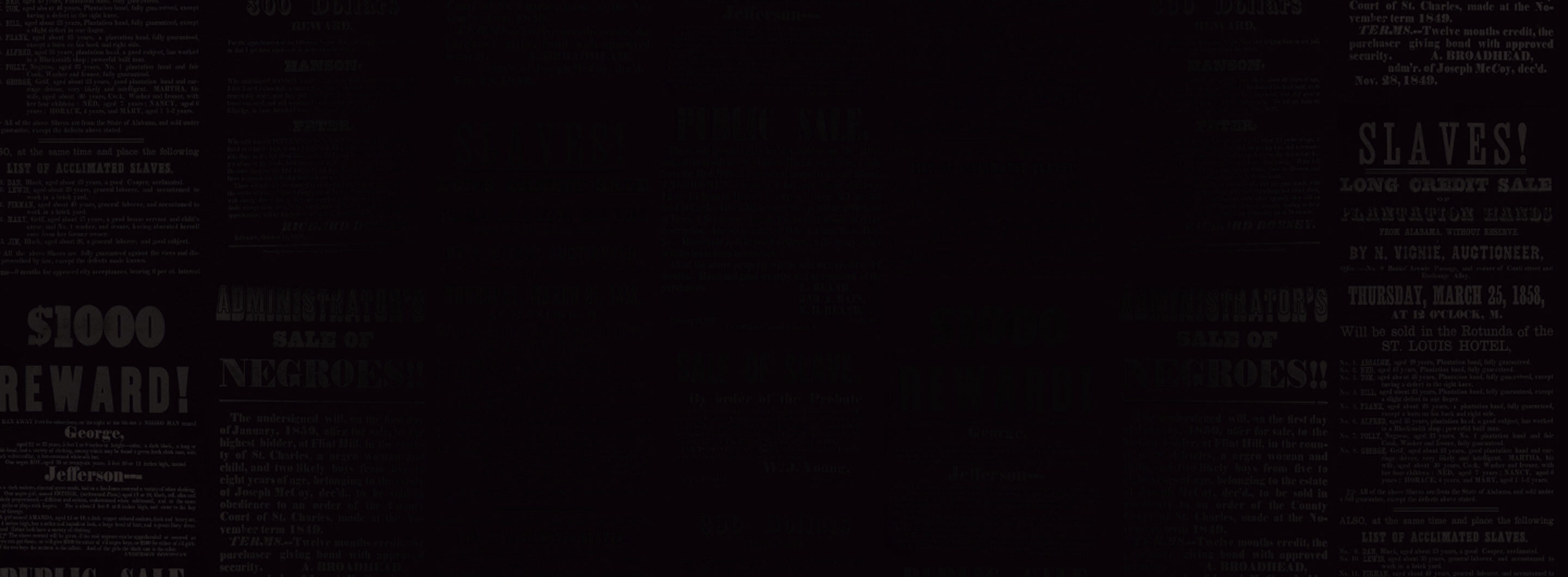
It is the fixed purpose of the Democratic Party in the South that the Negro shall not vote, and murder is a common means of intimidation to prevent them.
U.S. Attorney General Alphonso Taft, 1876
Voter Suppression
"Of Course He Wants to Vote the Democratic Ticket!" Illustration from Harper’s Weekly, 1876
Tissue Ballot
White southern Democrats used violence, intimidation, and electoral fraud to suppress the votes of Black men, who mostly supported the Republican Party. During Reconstruction, the federal government used military force to protect Black voting rights, but this protection largely ended after 1877. As southern Democrats regained control of state governments, they passed laws that prevented African Americans from voting, using tactics such as poll taxes, literacy tests, and grandfather clauses to get around the 15th Amendment’s ban on race-based voting laws.
The poll tax was a fee to vote that could be waived at the discretion of the local poll registrar. The literacy test allowed the local poll registrar to decide if the applicant passed a reading test and could vote. The grandfather clause only allowed people to vote whose grandfather voted before 1867; this disqualified most southern African Americans as their enslaved grandfathers could not vote at that time.

Massacres
The Massacre of Six Colored Citizens
Peter Crosby Handbill
Incidents of mass murder and violence against African Americans occurred before the end of slavery but increased during Reconstruction. White citizens, sometimes aided by law enforcement, attacked African Americans and destroyed their communities often in response to voting, political organizing, and educational and economic achievement.
These incidents occurred in rural communities and cities across the country. The Equal Justice Initiative has documented massacres, lynchings and other forms of racist violence during Reconstruction.
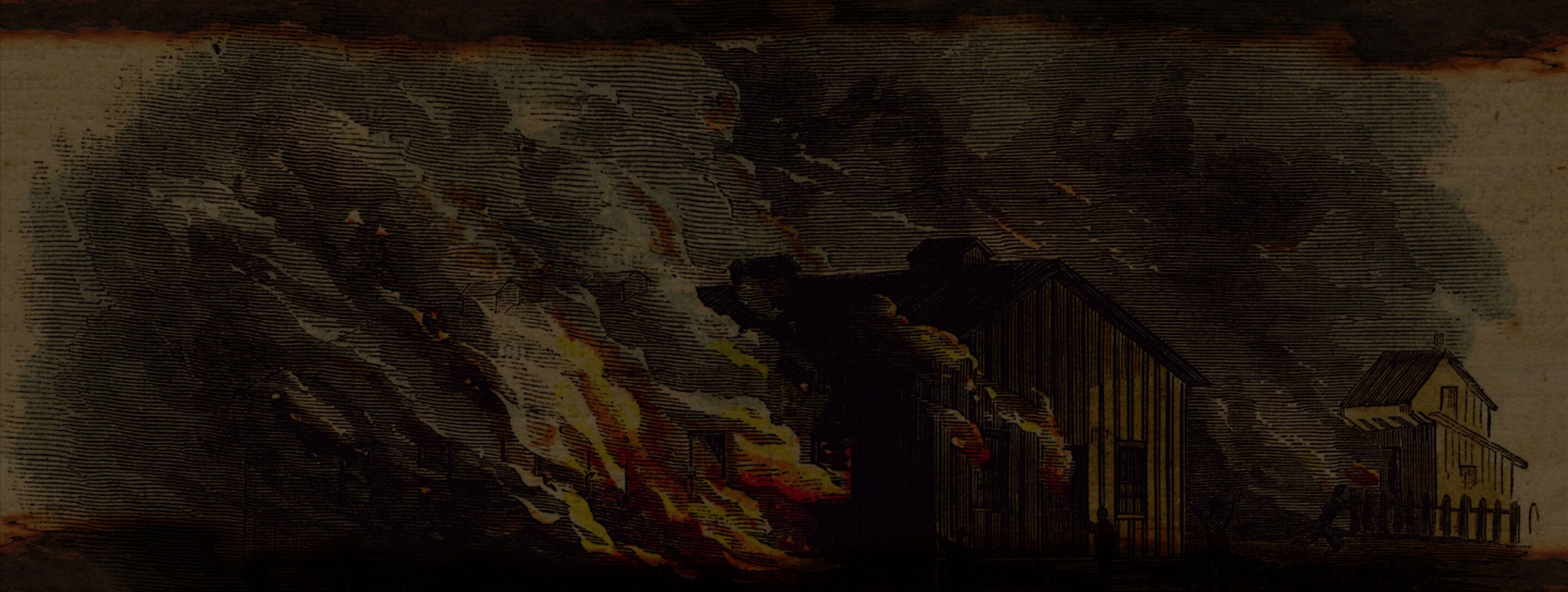
The Memphis Massacre
In May 1866, mobs of white civilians and police attacked the African American community in Memphis, Tennessee, killing an estimated 46 people and injuring hundreds more.
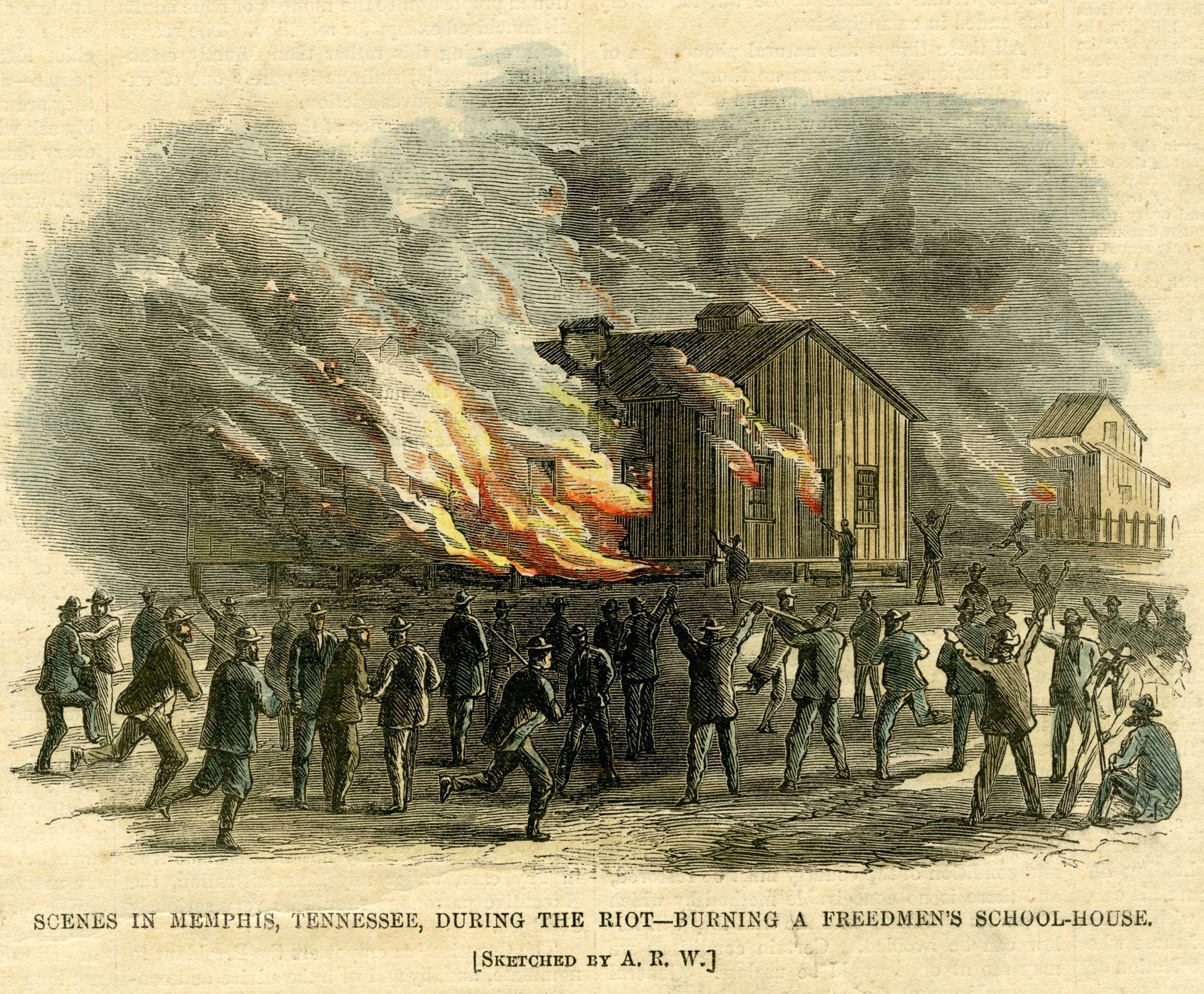
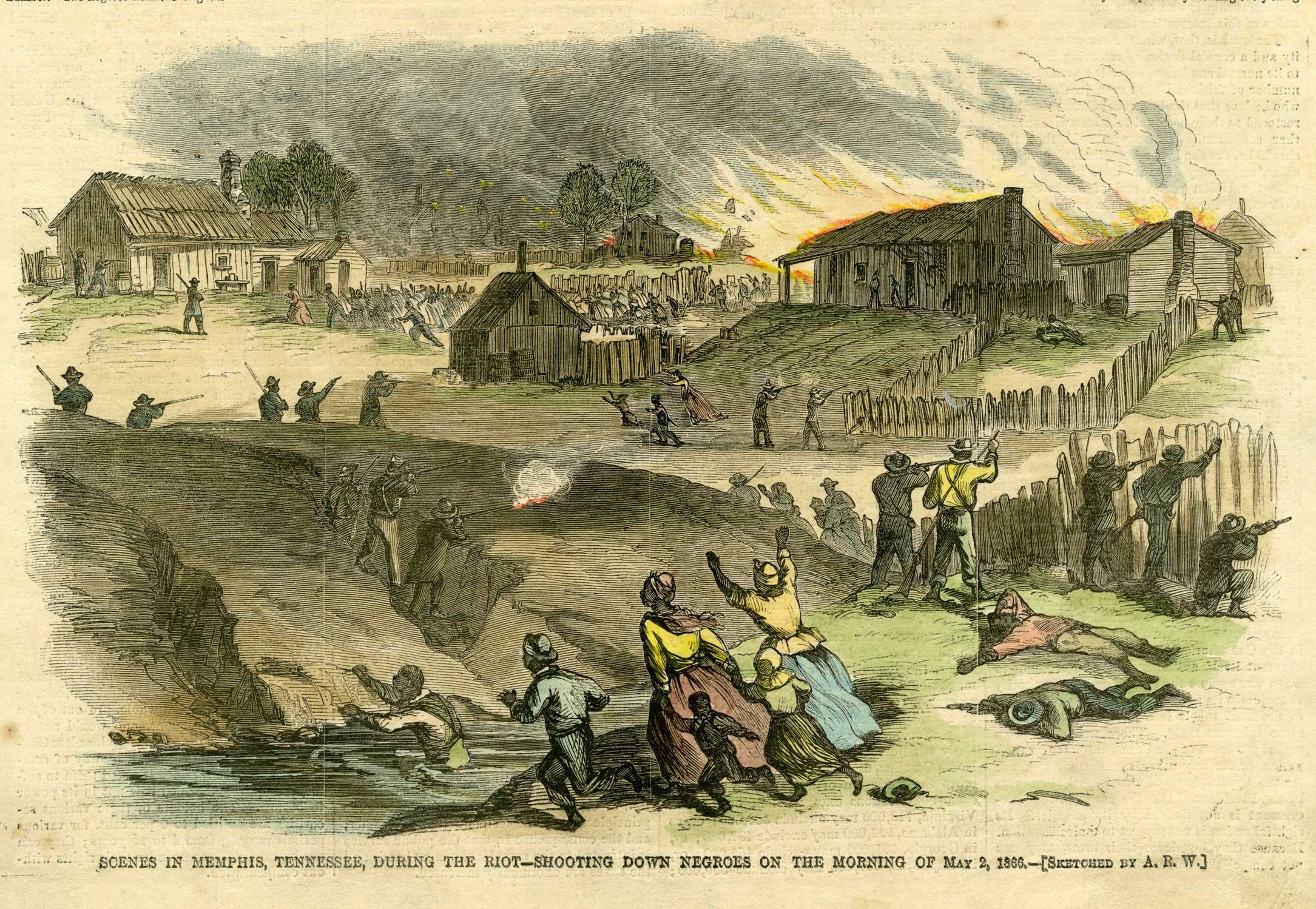
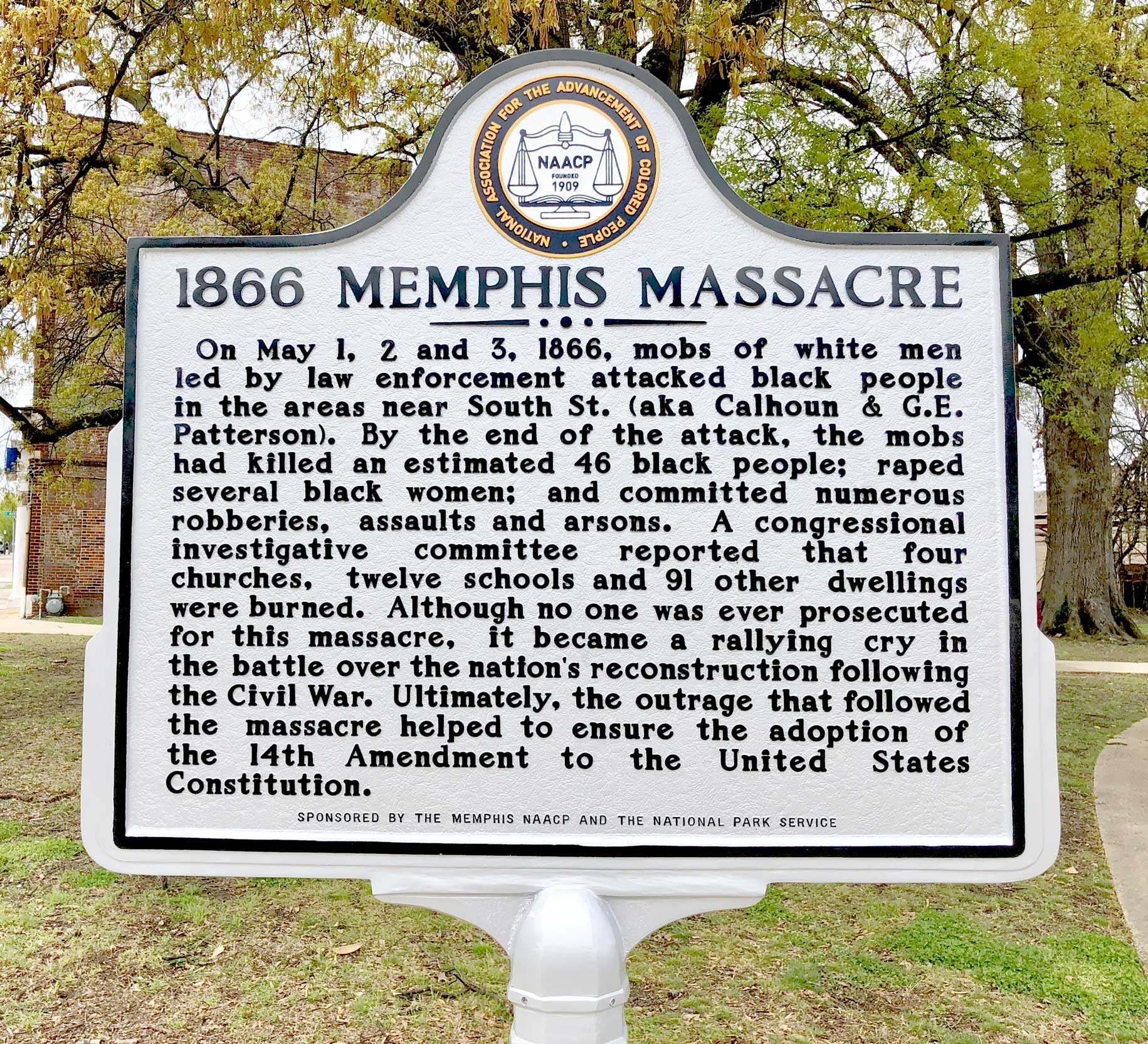

"White Man’s Government"
Democratic Ticket
During Reconstruction, Democrats used racist rhetoric to appeal to white voters and rally opposition against candidates who supported African American civil rights. They portrayed Black officeholders in the South as corrupt and incompetent, and asserted that only white men deserved the rights and privileges of citizenship. They also appealed to white fears of interracial marriage and depicted Black equality as a threat to white supremacy.

The Prostrate State
Written in 1873 by James S. Pike, a white Republican journalist from Maine, this racist portrayal of Black legislators in South Carolina influenced many northern white Republicans to abandon support for Reconstruction.
Danville Circular
In 1879 the Readjuster Party, a coalition of Black and white Republicans, won control of the Virginia legislature. Democrats in Danville, where Readjusters led the city council, circulated this pamphlet in 1883 describing interracial government as a threat to white supremacy. The circular inflamed racial tensions and led to the Readjusters’ defeat.

Ku-Klux Democracy
Ku Klux Klan Mask
Illustration from The Invisible Empire
Shortly after Congress passed the Civil Rights Act of 1866, which declared African Americans equal citizens under the law, Confederate veterans in Tennessee founded the Ku Klux Klan. Along with other white supremacist groups, the Klan used terror and violence to support the Democratic Party’s return to power in the South. A congressional investigation into Klan activity reported hundreds of attacks between 1866 and 1871, including murders and whippings of Black citizens and burnings of Black schools and churches. The Klan also targeted white Republicans, whom they denounced as northern “carpetbaggers” and southern “scalawags.”


The Ku Klux Klan Hearings
Visit of the Ku-Klux
In 1870 and 1871, Congress passed three laws known as the Enforcement Acts, which invoked the power of the federal government under the 14th Amendment to intervene when states failed to protect the rights of citizens. The Enforcement Acts specifically targeted the Ku Klux Klan for conspiring to prevent Black men from voting.
During federal grand jury investigations, hundreds of African Americans came forward to testify about being terrorized by the Klan. In South Carolina, this testimony led to the indictment of 220 Klansmen for civil rights violations, but only five were ultimately tried and convicted.
Harriet Hernandes of Spartanburg was one of the witnesses who testified against the Klan in South Carolina. Listen to an excerpt from her testimony, read by Lisette Booty.

The Compromise of 1877
In the 1876 US presidential election, Republican Rutherford B. Hayes and Democrat Samuel Tilden both claimed victory in three southern states (Florida, Louisiana, and South Carolina). The election dispute threw the nation into political turmoil for months. In March 1877, party leaders reached a compromise: Hayes would become president in exchange for recognizing Democratic rule over state governments in the South and withdrawing federal troops who had been stationed there since the end of the Civil War to protect African Americans’ civil rights.
The Compromise of 1877, along with US Supreme Court decisions in the 1870s and 1880s that weakened and overturned civil rights laws, signaled the federal government’s retreat from Reconstruction and its promises of full citizenship for African Americans. Without federal intervention to protect Black civil rights, white supremacists reclaimed control of the South and passed laws creating the system of racial segregation and discrimination known as Jim Crow. African Americans who asserted their constitutional rights faced reprisals, threats, and the terror of the lynch mob.
